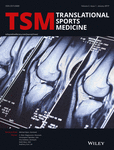Characteristics of torque production of the lower limb are significantly altered after 2 hours of treadmill load carriage
Abstract
Load carriage is seldom completed in isolation, meaning load bearers need to be physically capable of physical activity after the load carriage task. This study aims to examine changes in lower limb muscle strength, as measured by torque production across a range of joint angles as a result of prolonged load carriage. Thirty-four healthy participants underwent 2 hours of loaded or unloaded treadmill load carriage, with lower limb muscle function variables assessed pre- and post activity activity. The loaded group had a mass of (Mean[range]) 76.45 (27.12) kg, stature: 178.56 (17.63) cm, age: 23(6) years, and comprised of 13 males and three females. While the unloaded group had a body mass of 73.69 (24.19) kg, stature: 178.89 (18.49) cm, age: 22 (5) years and comprised of 14 males and four females. Significant reductions across a range of parameters were observed. Characterized by reductions at the optimum muscle length for torque output, with all aspects demonstrating large (knee extension at 180° s−1:0.51 Standardized SD, knee extension at 60° s−1:0.98 standardized SD) or extremely large individual differences (knee flexion at 180° s−1:2.17 standardized SD). These findings suggest after the completion of the load carriage task participants are in a significantly reduced physical state, which may have implications for secondary tasks.
CONFLICT OF INTEREST
Authors report no conflict of interests.




